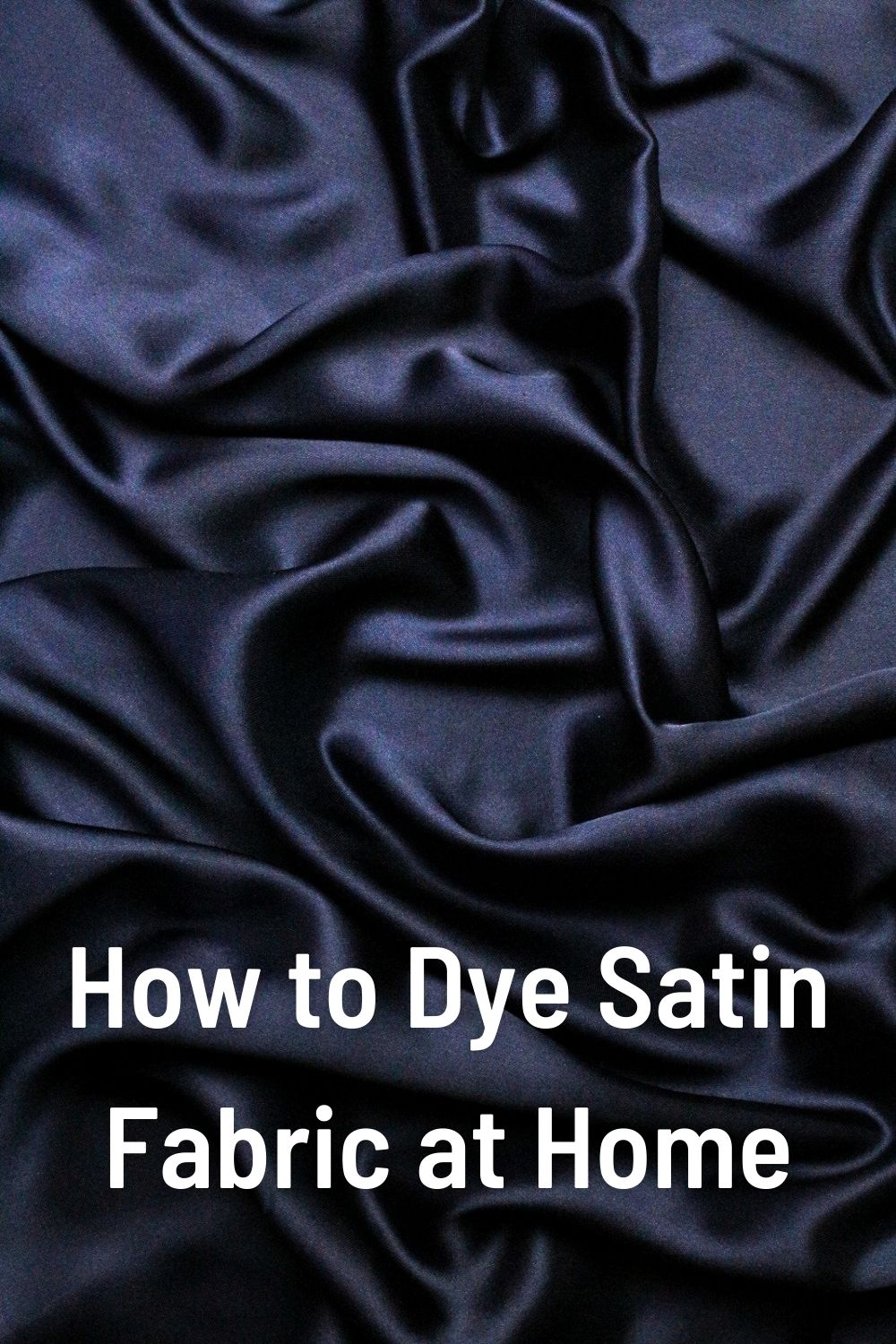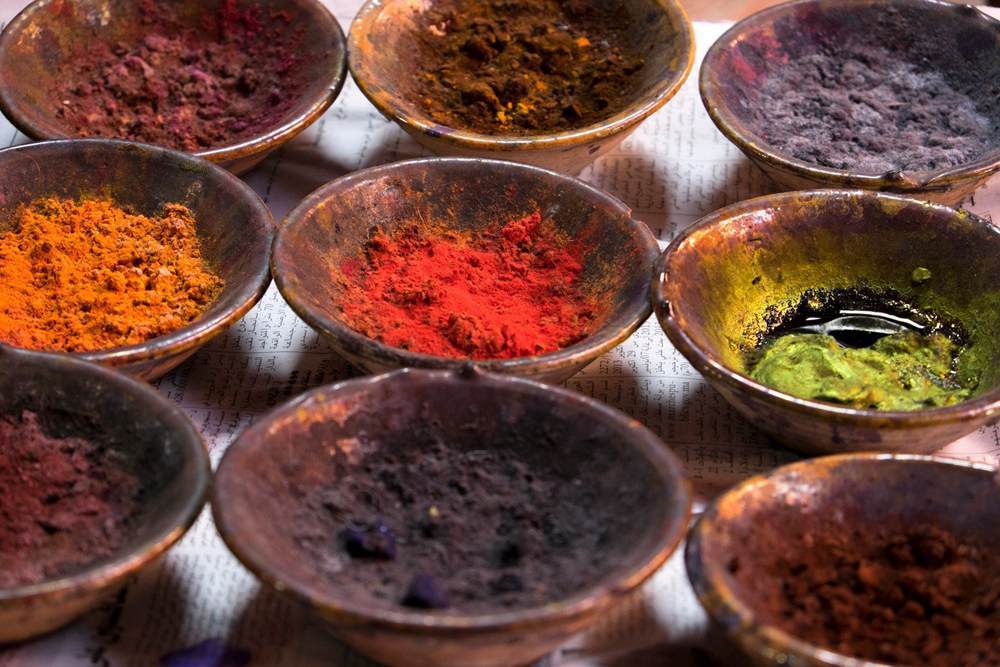
Satin is a beautiful, glossy fabric that can add an elegant touch to any sewing project. While satin is available in a wide range of colors, sometimes you may want to dye your own satin fabric at home to achieve a custom color. Dyeing satin fabric is easy to do with the right materials and techniques.
Follow this step-by-step tutorial for beautiful, vibrant results when dyeing satin fabric at home. Let’s get started!
Table of Contents
What You Need to Dye Satin Fabric
Dyeing satin fabric at home is simple with just a few key supplies. Here is what you will need:
Dye
The first thing you will need is fabric dye formulated for your specific type of satin fabric. Options include:
- All-purpose dye – Works on natural fibers like silk or cotton satin. Look for dyes like RIT All-Purpose Dye.
- Acid dye – For dyeing nylon or polyester satin. Try Jacquard Acid Dye.
- Disperse dye – For polyester satins. RIT DyeMore Synthetic Fabric Dye is a good option.
Be sure to check the dye package for specific fiber recommendations. Using the wrong type of dye may produce dull, uneven color.
Satin Fabric
You can dye any type and color of satin fabric. White or pale satin works best for achieving bold, vibrant hues. Pre-wash the fabric before dyeing.
Large Pot
You will need a large pot deep enough to fully submerge the satin in dye bath. Stainless steel or enameled pots work best. Do not use aluminum pots as this can interact with the dye.
Measuring Spoons
Use stainless steel or plastic spoons to measure out dye. Avoid using metal utensils other than stainless steel.
Stirring Tool
Use a long handled stainless steel or wooden spoon to stir the dye bath.
Salt
Salt helps the dye bind to the satin fibers. Use plain table salt.
Vinegar or pH Adjustor
For dyeing nylon or polyester satin, you will need white vinegar or a pH adjuster like sodium carbonate. This helps the acid dye take even color.
Rubber Gloves and Apron
Wear protective gloves and an apron to keep clothes stain-free.
How to Prepare Satin for Dyeing
Proper fabric preparation is a key step for dyeing satin successfully. Here is how to get your satin ready for the dye bath:
Pre-Wash
Wash and dry the satin according to fabric care instructions to remove any fabric finishes or sizing. This helps the dye absorb evenly across the fabric.
Cut to Size
For even dyeing, cut satin into manageable pieces if working with large yardages. Try to keep pieces under 2 yards.
Wet Fabric
Fully wet the satin in a basin of warm water. This allows the fibers to absorb the dye once added to the bath.
Remove Excess Water
Gently squeeze out excess water but do not wring or twist. The satin should be fully damp but not dripping wet before dyeing.
Following these simple preparation steps allows the satin to readily accept the dye for bold, even color.
Dyeing Methods for Satin Fabric
There are a few easy techniques you can use to dye satin fabric at home:
Stovetop Dyeing
This traditional dyeing method involves heating a dye bath on the stovetop. It offers great control for achieving even color. Follow these steps:
- Fill large pot halfway with water. Use enough water to fully submerge the satin.
- Add dye. Follow package directions and stir well to dissolve. The water should be tinted evenly.
- Wet and add satin. Put damp prepared satin into the pot.
- Heat dye bath. Bring the pot to a simmer over medium heat, stirring gently.
- Simmer for 30 minutes to allow satin to absorb the dye. Stir occasionally.
- Remove from heat. Check satin for desired color intensity. SIMmer longer if a darker shade is desired.
- Rinse and wash satin until water runs clear.
This process allows you to closely monitor the dyeing and remove the satin once the ideal shade is reached.
Bucket Dyeing
For large yardages, bucket dyeing may be easier than using a stovetop. Follow these instructions:
- Fill a large bucket with warm water. Use a 5-gallon bucket for yards of satin.
- Add dye and stir. Mix according to package directions until dissolved.
- Submerge damp satin into the bucket and push down to ensure full saturation.
- Let soak for 60 minutes, stirring occasionally. Add more dye if darker color is desired.
- Remove and rinse until water runs clear.
This hand-stirred method works well for dyeing lots of satin fabric.
Washing Machine Dyeing
For a super easy technique, you can dye satin right in your washing machine. Here’s how:
- Fill machine with hot water. Only fill large enough to submerge satin.
- Add dye and mix. Follow package instructions for amount of dye to use.
- Add prepared satin. Use an old towel to prevent other items from being dyed.
- Run a hot wash cycle for at least 30 minutes to allow dye to absorb into the satin.
- Check color and re-wash if you want a darker shade.
- Wash in cold water until rinse water is clear.
This method works best for smaller satin pieces. Make sure to run an empty rinse cycle to clean out any residual dye after.
How to Dye Satin Different Colors

One of the joys of dyeing satin at home is exploring all the vibrant colors possible! Here are some tips for achieving popular satin dye colors:
Blue
For a bold royal or navy blue, use a navy or sapphire all-purpose dye like RIT Liquid Dye in Navy Blue. Dyed cotton or silk satin works best for deep blues.
Red
Try using a cherry red or crimson dye shade. Look for all-purpose or acid dyes in these shades. For best results, opt for a deeper red dye rather than orange-red.
Pink
Pastel pink satin is pretty for formal dresses. Use a blush or baby pink dye and remove the satin quickly once the ideal soft shade develops.
Purple
Mixing blue and red dyes together can produce a vibrant purple. Play around with ratios to create different shades from lavender to berry purple.
Yellow
An all-purpose sunflower or golden yellow dye will give satin a cheery pop of color. Take care not to over-dye yellow satin as it can turn greenish if too saturated.
Orange
For bright orange satins perfect for Halloween costumes or decor, try using a dye like RIT Sunshine Orange. Keep in mind orange dye can be tricky to rinse out fully.
Green
It can be difficult to directly dye satin green at home. Instead, first dye the satin blue, then over-dye in a golden yellow tone to produce a rich green color.
Black
For sophisticated black satin, use a rich onyx or ebony black dye. Dye in small batches only as black dye is hard to remove if you make a mistake.
With the right dyes and techniques, you can create satin fabric in any color you can imagine!
Tips for Vibrant, Long-Lasting Dye Jobs
Follow these handy tips and tricks for getting the most vibrant, fade-resistant results when dyeing satin at home:
- Simmer natural fiber satin like silk or cotton over low heat for 30+ minutes for best color absorption.
- Soak synthetic satins like polyester in the dye bath for 1 hour for full saturation.
- Add 1 4 cup salt to the dye bath to help bind color to satin fibers.
- Use vinegar for acid dyes to properly set color on polyester or nylon satins.
- Dye in small batches for best control over color results.
- Rinse in cool water until water runs completely clear after dyeing completes.
- Wash dyed satin separately the first few times to prevent color transfer.
- Let satin air dry to avoid heat damage. Tumble drying can prematurely fade color.
Caring for Dyed Satin Fabric
Once your satin is dyed, follow these tips to keep the vibrant color lasting as long as possible:
- Wash in cold water using a gentle detergent and avoid using bleach.
- Line dry or dry on low heat to prevent fading from heat damage.
- Iron dyed satin inside out at a medium heat setting.
- Store folded in a cool, dark place like a drawer to prevent light damage.
- Handwash delicate dyed silks and specialty satins when possible to preserve dyes.
With proper care, your custom dyed satins will retain their beautiful colors for many wears and washes. Enjoy showing off your vibrant hand-dyed satin creations!
Frequently Asked Questions
Can you dye satin with Kool-Aid or food coloring?
While you can use Kool-Aid drink mix or food coloring to temporarily color satin, the results will not be colorfast. The dye will eventually wash out. It’s best to use an actual fabric dye formulated for permanent results on satin.
What is the easiest way to dye satin at home?
The easiest technique for dyeing satin is using your washing machine. Simply fill with hot water, add dye, and run a wash cycle with your prepared satin. The machine does the mixing and agitation required to absorb the dye into the satin fibers.
Does satin take dye differently than other fabrics?
Satin can be a little trickier to dye evenly than plain woven fabrics. The satin weave with longer floating threads reflects light differently, so you need to ensure complete saturation for a uniform result. Using proper dye and preparation helps satin take dye well.
Can you dye silk satin with cotton dye?
It is generally not recommended. While both are natural fibers, silk and cotton may require different dye formulations for proper bonding. Look for dyes specifically recommended for silk satin for best color results and vibrancy.
How do you dye white satin shoes?
White satin bridal or formal shoes can be dyed any color. Clean the shoes first, then apply fabric dye in thin, even coats using a foam brush or soft cloth. You can hand dye or use a spray bottle for full coverage. Allow each coat to dry before applying more dye. Finish with a waterproofing spray to prevent color transfer when worn.
Conclusion
Dyeing elegant satin fabric at home opens up so many options for customization projects and unique looks. With the proper dyes, tools, and techniques, you can dye satin fabric any vibrant hue right at home. Always start with high-quality dyes and properly prepared fabric for professional dyeing results. Follow the step-by-step instructions in this guide for beautiful hand-dyed satin creations you will cherish for years to come. Happy dyeing!